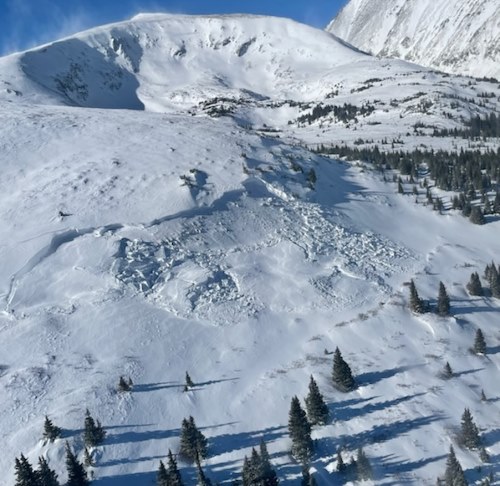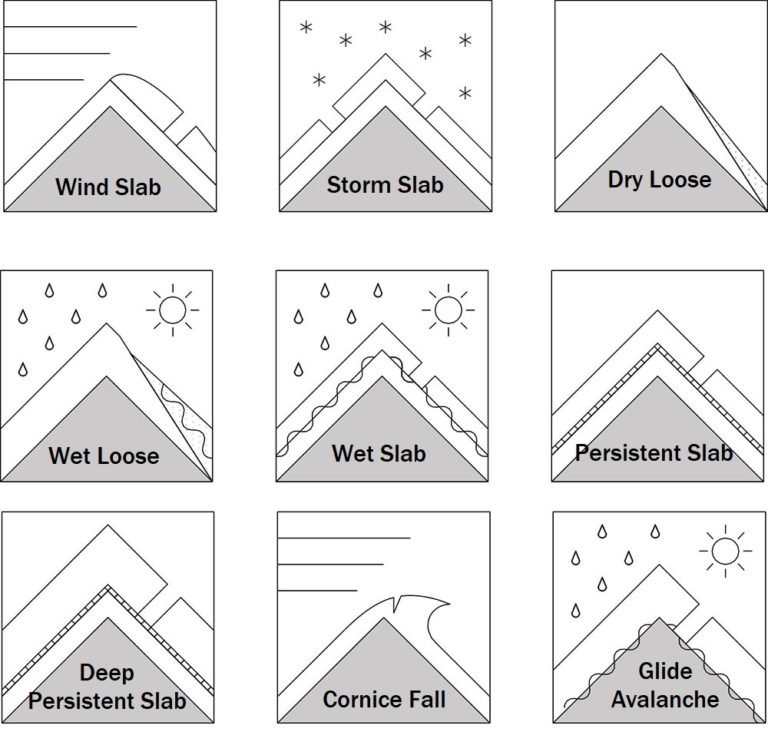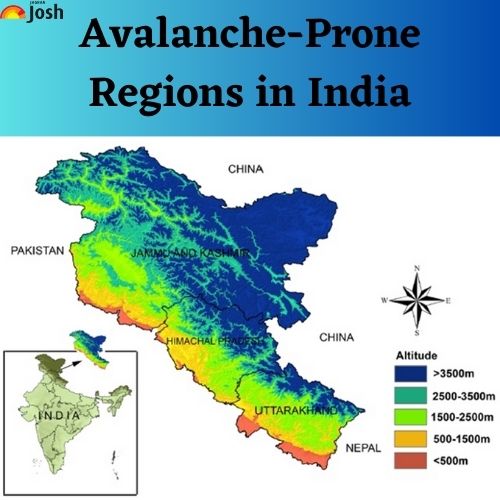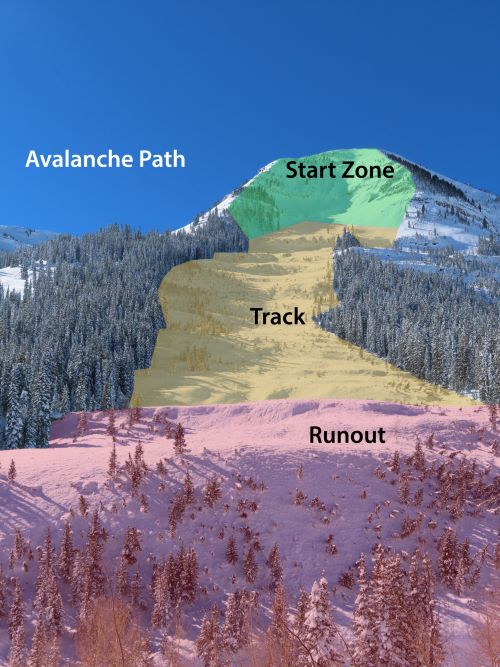Spending winters in the mountains, surrounded by white snow, can be both peaceful and exhilarating. For adventure enthusiasts, activities such as skiing, snowboarding, and snowball fights make for an unforgettable experience. However, mountain slopes come with an inherent risk—avalanches. Though they may appear harmless, avalanches pose a serious threat to life and property. Therefore, understanding them is crucial for those who frequent snowy regions.
Recently in Uttarakhand, massive Avalanche occurred near the Border Road Organisation in the border area of Mana. So in this article, we will explore what is Avalanche, its main causes, primary and contributing factors, types, and impacts.
An avalanche struck a GREF Camp near Mana village in Garhwal Sector. A number of labourers are feared to be trapped. Indian Army’s IBEX BRIGADE swiftly launched rescue operations inspite of continuing heavy snowfall and minor avalanches. So far 10… pic.twitter.com/adVcAu9g4g
— SuryaCommand_IA (@suryacommand) February 28, 2025
What is Avalanche?

Source: Colorado Avalanche Information Center
Avalanche occur when snow accumulates on a slope, loses stability, and rapidly slides downward due to gravitational pull. The stability of snow depends on various factors, including the force exerted by the snow and the resistance provided by friction or vegetation. An avalanche is triggered when the force of gravity surpasses these resisting forces, often due to natural factors like heavy snowfall, temperature changes, or even human activity. These events typically last only a minute or two, making them difficult to observe directly. Despite appearing as a mere cascade of snow, avalanches can cause significant destruction, endangering lives and property. Therefore, anyone venturing into mountainous regions during winter must be aware of avalanche risks and safety precautions.
Main Causes of Avalanche
- Strong Winds and Snowstorms: Avalanches are more likely to happen during intense snowfall, especially when strong winds push snow across mountain slopes. This movement can create unstable snow deposits, increasing the risk of sliding.
- Heavy Snow Accumulation: A sudden or continuous buildup of snow adds weight to the snowpack, making it more likely to collapse. Wet snow avalanches are common in warmer months when rain weakens the packed snow.
- Human Activities: Winter sports such as skiing, snowboarding, and mountaineering can disturb the snowpack, making it unstable. In some cases, even small movements on steep slopes can trigger an avalanche.
- Vibrations and Disturbances: The use of snowmobiles, jet skis, and other heavy vehicles can create vibrations that weaken the snow’s grip. Even loud noises or minor shifts in weight can trigger a slide in unstable conditions.
- Unstable Snow Layers: Older layers of snow sometimes freeze and form a weak base. When new snow accumulates on top, it may not bond well, leading to sudden shifts and potential avalanches.
- Warm Weather: Rising temperatures, especially over long periods, can melt the surface layers of snow. This makes the snowpack weaker and more prone to breaking apart, leading to avalanches.
Primary and Contributing Factors
Avalanche are caused by a combination of fixed (primary) and variable (triggering) factors. These influences determine the nature and intensity of avalanches. The key factors are categorised below:
| Category | Factors | Explanation |
| Primary Factors | Topographic Aspects | |
| Slope inclination | Steeper slopes (30°-45°) are more prone to avalanches. | |
| Slope shape | Concave and convex slopes influence snow stability. | |
| Location (ridge or base of the slope) | Snow accumulation varies based on terrain position. | |
| Orientation of the slope | Leeward slopes accumulate unstable snow. | |
| Vegetation Cover | ||
| Presence and height of trees | Trees act as anchors, reducing snow movement. | |
| Thickness of vegetation | Dense vegetation stabilises snow, preventing slides. | |
| Triggering Factors | Weather Conditions | |
| Snowfall depth and accumulation | Rapid accumulation adds stress to existing snow layers. | |
| Wind speed | Wind redistributes snow, forming unstable layers. | |
| Atmospheric and snow temperature | Fluctuations weaken snow bonding, leading to instability. | |
| Other Triggers | ||
| Increased snow weight due to deposits from cornices | Adds extra load, increasing avalanche risk. | |
| Vibrations from earthquakes or loud sounds (e.g., gunfire) | External forces can trigger snow slides. |
Types of Avalanche

Source: Colorado Avalanche Information Center
Avalanche are classified based on their occurrence type, snow condition, and movement pattern:
By Occurrence Type
- Loose Snow Avalanche: Starts at a single point and spreads out, typically small in scale.
- Slab Avalanche: A large, cohesive mass of snow slides down suddenly.
By Snow Condition
- Dry Snow Avalanche: Contains no water.
- Wet Snow Avalanche: Contains water, making it heavier and more destructive.
By Depth of Movement
- Surface Layer Avalanche: Occurs within the snow cover.
- Full-Depth Avalanche: The entire snowpack slides down to the ground surface.
Characteristics of Avalanche
Avalanche exhibits different movement patterns, such as:
- Powder Avalanche: These involve fine snow particles moving at high speed and covering large areas.
- Flow Avalanche: Appear similar to flowing water, usually occurring when temperatures rise.
- Mixed Avalanches: A combination of powder and flow avalanches, often resulting from rapid snowfall over unstable layers.
Impacts and Damage
Avalanche can cause severe destruction, particularly to transportation routes and structures. Some common consequences include:
- Road obstructions due to snow accumulation.
- Structural damage to roads, retaining walls, and buildings.
- Destruction during construction projects, making certain regions unsafe for infrastructure development.
Preventive Measures and Hazard Assessment
To mitigate the risks associated with avalanche, authorities implement various strategies:
- Mapping risk-prone areas and informing residents.
- Afforestation efforts to stabilise snow cover.
- Artificial triggering to reduce excessive snow accumulation.
- Predictive analysis for early warning and evacuation procedures.
Avalanche-Prone Regions in India

The Himalayan region is highly susceptible to avalanches, particularly in the western segment. Vulnerable areas include:
- Jammu and Kashmir: High-altitude areas of Kashmir, Gurez Valley, Kargil, and Ladakh.
- Himachal Pradesh: Regions such as Chamba, Kullu-Spiti, and Kinnaur.
- Uttarakhand (formerly Western Uttar Pradesh): Chamoli and Tehri Garhwal districts.
Avalanche Zones and Risk Classification
Avalanche-prone areas are categorised into three zones:
- Red Zone: High-risk areas with frequent avalanches exerting an impact pressure above 3 tonnes per square meter.
- Blue Zone: Moderate-risk areas where the avalanche force is below 3 tonnes per square meter. While human activities may be permitted, evacuation measures must be in place.
- Yellow Zone: Low-risk areas where avalanches occur occasionally but do not pose immediate threats.

Source: Colorado Avalanche Information Center
Conclusion
Avalanches are natural disasters that can have severe consequences, especially in mountainous regions. Understanding their causes, types, and risk factors is crucial for disaster preparedness and mitigation. Through proper monitoring, predictive analysis, and preventive measures, the risks associated with avalanches can be significantly reduced.
Comments
All Comments (0)
Join the conversation